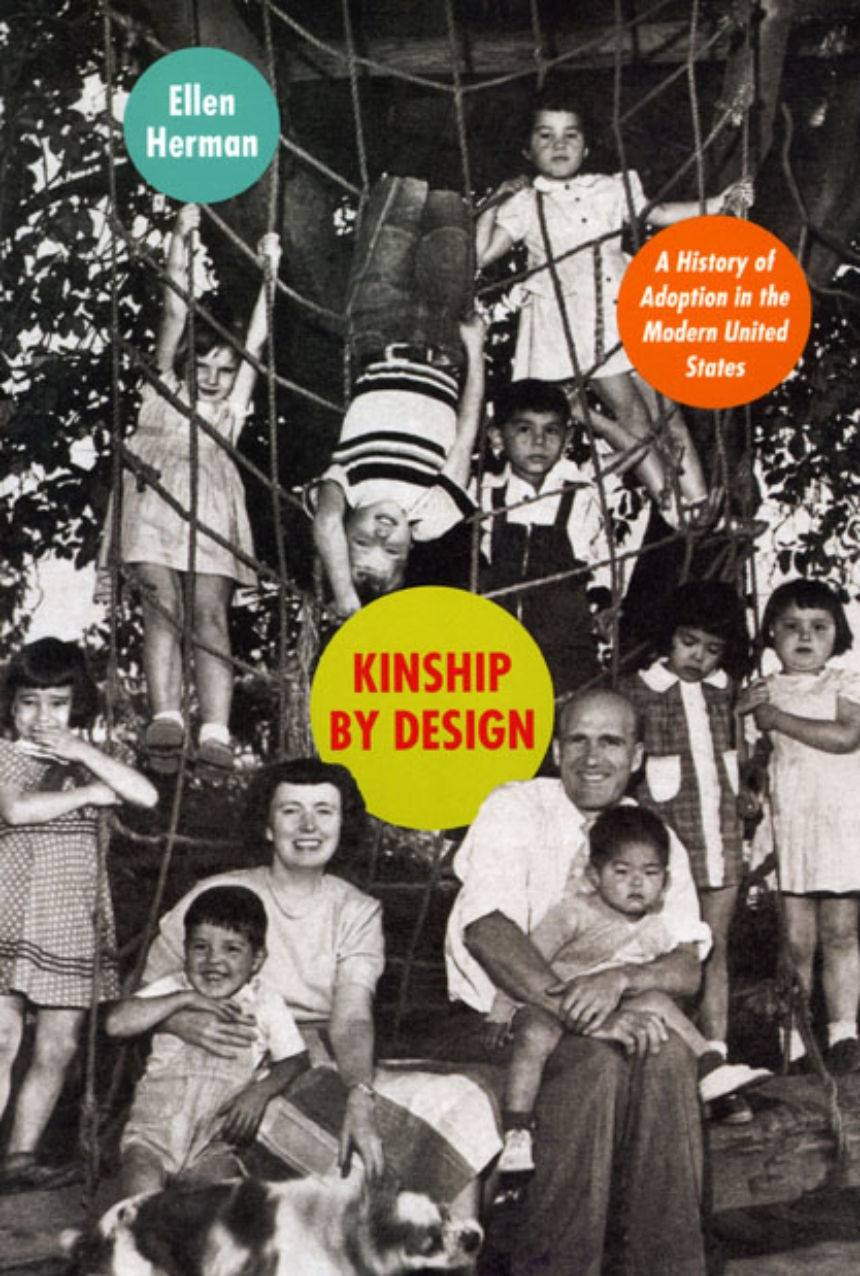Kinship by Design
A History of Adoption in the Modern United States
9780226327600
9780226327594
9780226328072
Kinship by Design
A History of Adoption in the Modern United States
What constitutes a family? Tracing the dramatic evolution of Americans’ answer to this question over the past century, Kinship by Design provides the fullest account to date of modern adoption’s history.
Beginning in the early 1900s, when children were still transferred between households by a variety of unregulated private arrangements, Ellen Herman details efforts by the U.S. Children’s Bureau and the Child Welfare League of America to establish adoption standards in law and practice. She goes on to trace Americans’ shifting ideas about matching children with physically or intellectually similar parents, revealing how research in developmental science and technology shaped adoption as it navigated the nature-nurture debate.
Concluding with an insightful analysis of the revolution that ushered in special needs, transracial, and international adoptions, Kinship by Design ultimately situates the practice as both a different way to make a family and a universal story about love, loss, identity, and belonging. In doing so, this volume provides a new vantage point from which to view twentieth-century America, revealing as much about social welfare, statecraft, and science as it does about childhood, family, and private life.
Beginning in the early 1900s, when children were still transferred between households by a variety of unregulated private arrangements, Ellen Herman details efforts by the U.S. Children’s Bureau and the Child Welfare League of America to establish adoption standards in law and practice. She goes on to trace Americans’ shifting ideas about matching children with physically or intellectually similar parents, revealing how research in developmental science and technology shaped adoption as it navigated the nature-nurture debate.
Concluding with an insightful analysis of the revolution that ushered in special needs, transracial, and international adoptions, Kinship by Design ultimately situates the practice as both a different way to make a family and a universal story about love, loss, identity, and belonging. In doing so, this volume provides a new vantage point from which to view twentieth-century America, revealing as much about social welfare, statecraft, and science as it does about childhood, family, and private life.
368 pages | 15 halftones | 6 x 9 | © 2008
Culture Studies:
History: American History
Psychology: Social Psychology
Sociology: Sociology--Marriage and Family
Reviews
Table of Contents
Acknowledgments
Introduction: Family Making in an Age of Uncertainty
Part 1: Regulation and Interpretation, 1900–1945
1. The Perils of Money and Sentiment (and Custom, Accident, Impulse, Intuition, Common Sense, Faith, and Bad Blood)
2. Making Adoption Governable
3. Rules for Realness
Part 1: Regulation and Interpretation, 1900–1945
1. The Perils of Money and Sentiment (and Custom, Accident, Impulse, Intuition, Common Sense, Faith, and Bad Blood)
2. Making Adoption Governable
3. Rules for Realness
Part 2: Standardization and Naturalization, 1930–1960
4.Matching and the Mirror of Nature
5.The Measure of Other People’s Children
Part 3: Difference and Damage, 1945–1975
6.Adoption Revolutions
7. The Difference Difference Makes
8. Damaged Children, Therapeutic Lives
Part 3: Difference and Damage, 1945–1975
6.Adoption Revolutions
7. The Difference Difference Makes
8. Damaged Children, Therapeutic Lives
Epilogue: Reckoning with Risk
Notes
Index
Notes
Index
